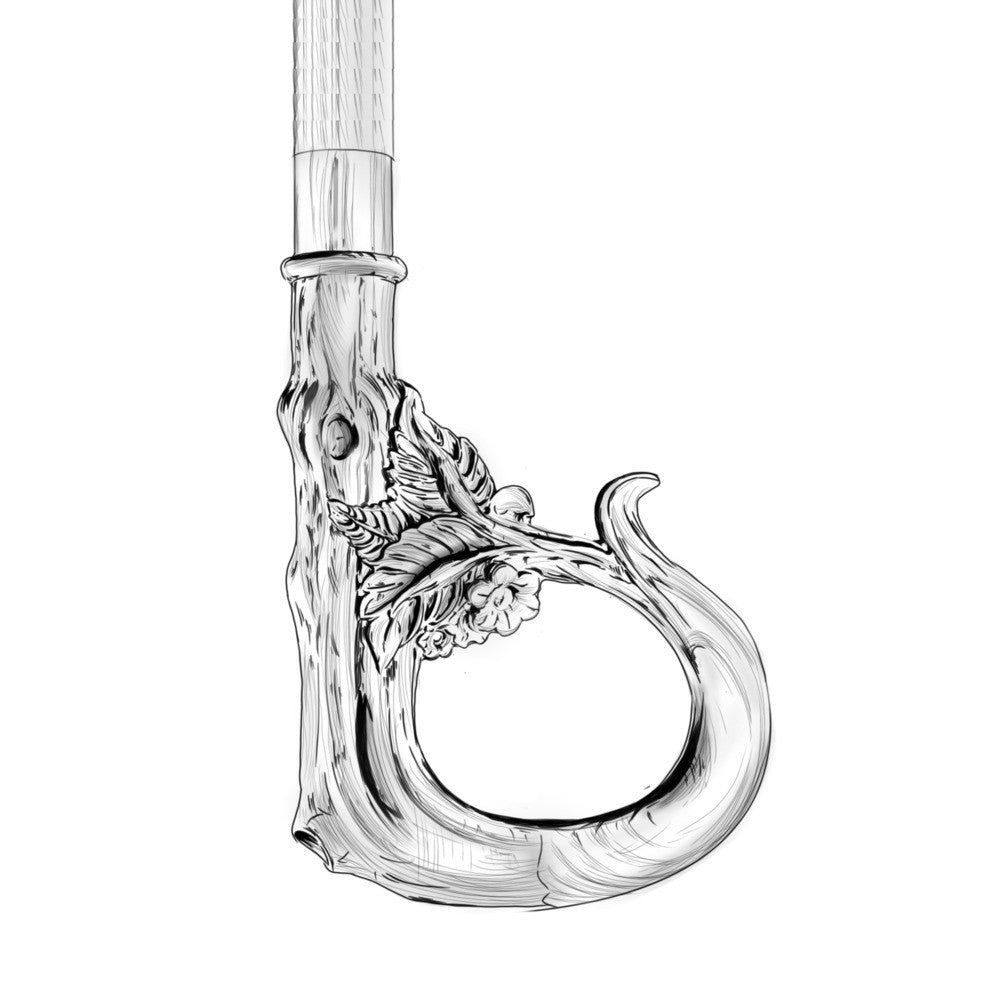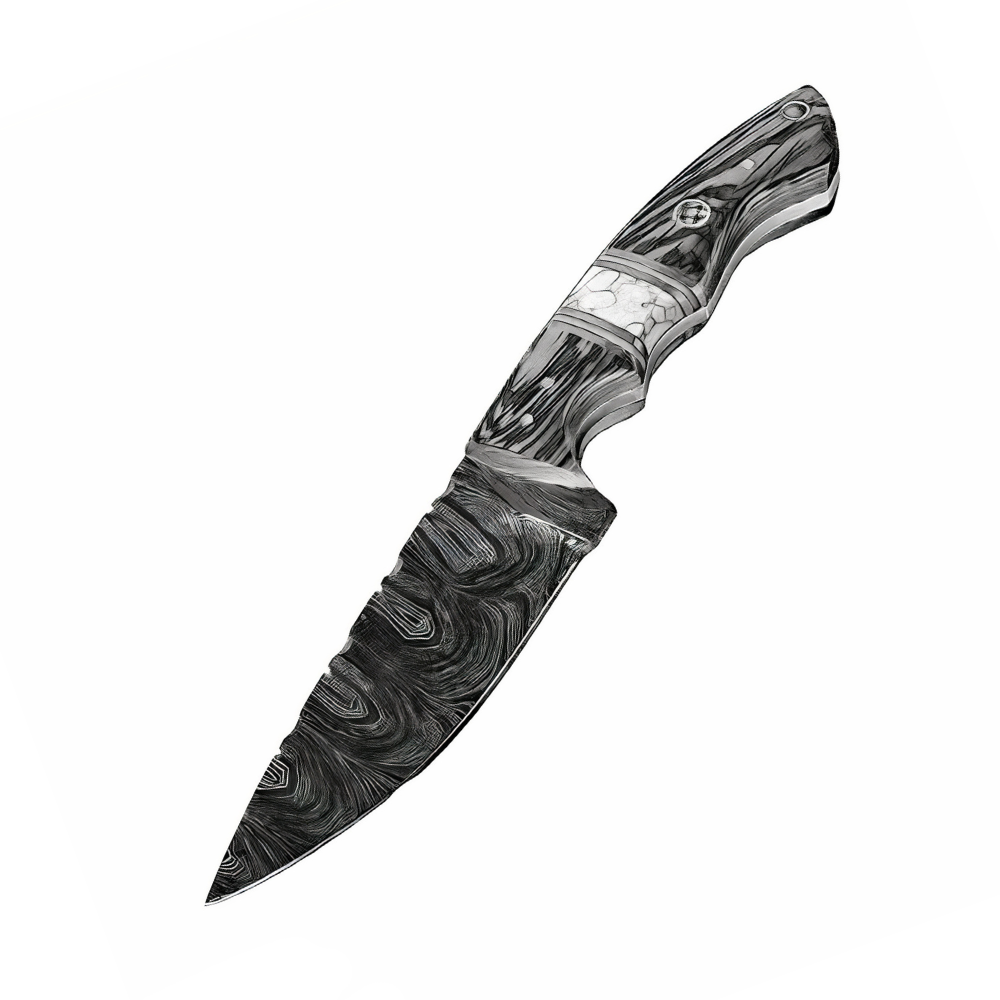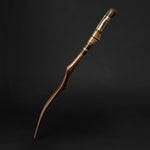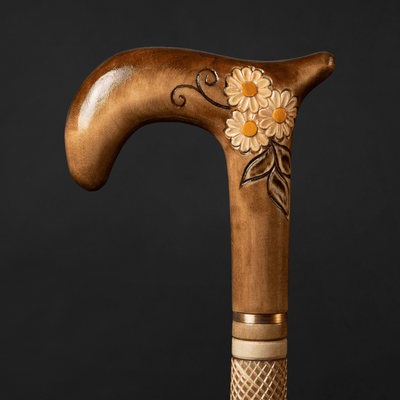You have no items in your shopping cart.
Recent Posts
-
The Art of Christmas Design: Walking Canes That Celebrate the Season in Style
-
How an Ergonomic Walking Cane Handle Prevents Hand and Wrist Strain?
-
How to Walk With a Cane Correctly to Avoid Back or Shoulder Strain?
-
5 Common Mistakes People Make When Buying a Walking Cane (and How to Avoid Them)
-
How to Choose a Walking Cane That Reflects Your Personality (Not Just Your Needs)?
-
Walking Canes That Match Formalwear for Weddings and Events
MOST POPULAR NOW
29
Mar
Walking sticks are an essential tool for hikers and outdoor enthusiasts, providing support, stability, and balance on uneven terrain. Whether you are hiking through rugged mountains or navigating slippery trails, a good pair of walking sticks can make all the difference. In this article, we will explore the importance of walking sticks for hiking, their benefits, and how they can enhance your outdoor experience.
How to choose the perfect walking stick for your next hike?
At first glance, walking sticks may seem like an unnecessary accessory for hiking. However, they provide numerous benefits that can make your hike more comfortable, enjoyable, and safe. Let's take a closer look at some of the benefits of using walking sticks for hiking.

Benefits of using walking sticks for hiking
-
Improved stability and balance
Walking sticks provide an extra point of contact with the ground, improving your stability and balance. This is particularly useful when hiking on uneven terrain, such as rocky trails, steep inclines, or slippery surfaces. With the added support of walking sticks, you can maintain your balance and avoid falls or injuries.
-
Reduced impact on joints
Hiking can be tough on your joints, especially if you are carrying a heavy backpack or hiking for an extended period. Walking sticks can help reduce the impact on your knees, hips, and ankles, by distributing the weight more evenly across your body. This can reduce the risk of injury and make your hike more comfortable.
-
Increased endurance
Walking sticks can help you conserve your energy and increase your endurance on long hikes. By using your arms to help propel yourself forward, you can reduce the strain on your legs and maintain a steady pace for longer periods. This can be especially beneficial for hikers who are carrying heavy loads or hiking at high altitudes.
-
Versatility
Walking sticks can be used for a variety of purposes, beyond simply providing support on the trail. They can be used to clear brush, test the depth of water, or even defend against wildlife. In a pinch, they can also be used as an improvised splint or shelter support.
Now that we have explored the benefits of walking sticks for hiking, let's take a look at some of the features you should consider when choosing a pair of walking sticks.
Features you should consider when choosing a pair of walking sticks
-
Material
Walking sticks can be made from a variety of materials, including aluminum, carbon fiber, and wood. Each material has its own benefits and drawbacks, so it's important to consider which material will best suit your needs.
-
Weight
The weight of your walking sticks can have a significant impact on your hiking experience. Lightweight sticks are easier to carry and can reduce fatigue, but may not provide as much stability as heavier sticks. Heavier sticks may be more durable and provide better support but can be tiring to carry for long periods.
-
Grip
The grip of your walking sticks is also an important factor to consider. Look for sticks with comfortable, ergonomic grips that provide a secure hold, even in wet or slippery conditions.
-
Length
The length of your walking sticks should be adjusted to your height and the terrain you will be hiking on. Generally, the sticks should be long enough that your arm forms a 90-degree angle when holding the grip, with the stick touching the ground.
In conclusion, walking sticks are an essential tool for hikers, providing support, stability, and balance on the trail. By choosing the right pair of walking sticks, you can enhance your outdoor experience, reduce the risk of injury, and increase your endurance on the trail. So why not add a pair of walking sticks to your hiking gear and see the difference for yourself?
Benefits of walking sticks for hiking
Hiking is a wonderful way to explore the great outdoors, but it can be challenging at times, especially if you're navigating rugged terrain. That's where walking sticks come in handy. In this article, we'll discuss the benefits of walking sticks for hiking and why you should consider using them on your next adventure.
Improved balance and stability
One of the main benefits of using walking sticks for hiking is improved balance and stability. When you're hiking, your body weight shifts constantly as you walk over uneven terrain. This can throw off your balance and make it difficult to maintain a steady pace. However, using walking sticks can help you keep your balance and reduce the risk of falls. By providing additional points of contact with the ground, walking sticks can help distribute your weight more evenly and provide a stable foundation for each step.
Reduced strain on joints
Another benefit of using walking sticks for hiking is that they can reduce strain on your joints. Hiking can be hard on your knees, ankles, and hips, especially if you're carrying a heavy backpack or navigating steep inclines and declines. However, walking sticks can help absorb some of the shock and pressure from your joints, making it easier to hike for longer periods without pain or discomfort. By using your arms to support your weight, walking sticks can also take some of the strain off your legs, giving them a much-needed break on long hikes.
Increased endurance
Using walking sticks for hiking can also increase your endurance. By reducing the strain on your legs and joints, you'll be able to hike for longer periods without getting tired. Additionally, by using your arms to help propel yourself forward, you'll be able to conserve energy and maintain a steady pace. This can be especially helpful on steep inclines where you might otherwise have to stop and catch your breath.
Improved posture
Finally, using walking sticks for hiking can improve your posture. When you're hiking, it's easy to slouch or lean forward, especially if you're carrying a heavy backpack. However, by using walking sticks, you can help keep your spine straight and your shoulders back. This not only looks better, but it can also help prevent back pain and other posture-related problems.
In conclusion, walking sticks are a valuable tool for hikers of all skill levels. By providing improved balance and stability, reducing strain on joints, increasing endurance, and improving posture, walking sticks can help you enjoy your hiking adventures to the fullest.

Types of walking sticks
Walking sticks are a valuable tool for hikers, providing improved balance and stability, reduced strain on joints, increased endurance, and improved posture. But with so many different types of walking sticks available, how do you know which one is right for you? In this article, we'll discuss the most common types of walking sticks and their pros and cons.
Single walking stick
A single walking stick is the most basic type of walking stick, consisting of a single pole with a handle at the top. Single walking sticks are lightweight and easy to carry, making them a great choice for beginners or for those who only need a little extra support. However, they offer less stability and support than other types of walking sticks, and can be difficult to use on steep or uneven terrain.
Trekking poles
Trekking poles are similar to single walking sticks, but they come in a pair and are designed specifically for hiking. They usually have adjustable length, allowing you to customize the height based on your needs. Trekking poles are great for hiking on uneven terrain, as they provide additional points of contact with the ground and help distribute your weight more evenly. They can also help reduce strain on your knees and ankles, making them a good choice for those with joint pain.
Hiking staff
A hiking staff is a longer, thicker version of a single walking stick. They typically come up to shoulder height and often have a curved handle. Hiking staffs are great for hikers who need a little extra support, but don't want the extra weight of trekking poles. They can be used on flat or uneven terrain and are especially useful for river crossings or fording streams. Hiking staffs are also great for people who want to do some light bushwhacking.
Comparison of the different types
When it comes to choosing the right walking stick for you, it really depends on your needs and preferences. Single walking sticks are a great choice for beginners or for those who only need a little extra support. Trekking poles are great for hikers who need additional stability and support on uneven terrain, and can also help reduce joint pain. Hiking staffs are great for hikers who want a little extra support, but don't want the extra weight of trekking poles. They are also useful for river crossings and light bushwhacking. Ultimately, the best walking stick for you is the one that feels comfortable and provides the support and stability you need.
In conclusion, there are several different types of walking sticks available, each with its own set of pros and cons. Whether you choose a single walking stick, trekking poles, or a hiking staff, using a walking stick can help you enjoy your hiking adventures to the fullest.
Choosing the right material
When it comes to hiking, having the right equipment is essential for a safe and enjoyable experience. Walking sticks are a great tool for hikers, providing improved balance, stability, and reduced strain on joints. However, with so many different types of walking sticks available, it can be difficult to know which one to choose. One important factor to consider when choosing a walking stick is the material it is made from. In this article, we'll discuss the pros and cons of three common materials: wood, aluminum, and carbon fiber.
Wood walking sticks
Wood walking sticks are a classic choice for hikers. They are durable and provide a natural, rustic look. Wood walking sticks are often handcrafted, which means each one is unique. They are also relatively inexpensive compared to other types of walking sticks. However, wood walking sticks are heavier than other types of walking sticks, which can make them tiring to use on long hikes. They can also be prone to breaking or splintering, especially if they are exposed to moisture.
Aluminum walking sticks
Aluminum walking sticks are a popular choice for hikers. They are lightweight and strong, which makes them great for hiking on rough terrain. They are also easy to adjust, which means you can customize the length to suit your needs. Aluminum walking sticks are also resistant to rust and corrosion, which means they are durable and long-lasting. However, aluminum walking sticks can be more expensive than other types of walking sticks. They can also be less comfortable to hold than other materials, especially if they don't have a comfortable grip.
Carbon fiber walking sticks
Carbon fiber walking sticks are the newest type of walking stick on the market. They are extremely lightweight, which makes them great for long hikes. They are also strong and durable, which means they can withstand a lot of wear and tear. Carbon fiber walking sticks are also adjustable, which means you can customize the length to suit your needs. However, carbon fiber walking sticks are often more expensive than other types of walking sticks. They can also be less durable than other materials, especially if they are exposed to extreme temperatures or rough terrain.
Pros and cons of each material
When it comes to choosing the right material for your walking stick, it really depends on your needs and preferences. Wood walking sticks are a classic choice and provide a rustic look, but they can be heavy and prone to breaking. Aluminum walking sticks are lightweight, durable, and easy to adjust, but they can be more expensive and less comfortable to hold. Carbon fiber walking sticks are extremely lightweight and durable, but they can be expensive and less durable than other materials.
Ultimately, the best material for your walking stick is the one that feels comfortable and provides the support and stability you need. Consider your budget, the terrain you will be hiking on, and your personal preferences when choosing the right walking stick material for you.
In conclusion, choosing the right material for your walking stick is an important decision. Wood, aluminum, and carbon fiber are all popular choices, each with their own set of pros and cons. By considering your needs and preferences, you can choose the right material for your walking stick and enjoy a safe and enjoyable hiking experience.
Proper sizing
When it comes to using walking sticks for hiking, one of the most important things to consider is proper sizing. Choosing the right size can greatly improve your comfort and stability on the trail, while choosing the wrong size can lead to discomfort and even injury. In this section, we'll cover some tips for determining the correct size for your height, adjusting the length for uphill and downhill hikes, and ensuring a comfortable fit.
Determining the correct size for your height
The first step in choosing the right size walking sticks for hiking is to determine the correct size based on your height. A good rule of thumb is to choose a walking stick that is roughly the same height as your elbow when your arm is at a 90-degree angle. To determine this, stand up straight and let your arms hang at your sides. Then, bend your elbows at a 90-degree angle and measure the distance from the ground to your elbow. This measurement should be used as a guide when selecting the length of your walking stick.
Adjusting the length for uphill and downhill hikes
While the measurement described above can be a good starting point, it's important to note that the length of your walking sticks may need to be adjusted depending on the terrain you'll be hiking on. For example, if you'll be hiking uphill, you may want to shorten your walking sticks slightly to help you maintain balance and reduce the strain on your arms and shoulders. Conversely, if you'll be hiking downhill, you may want to lengthen your walking sticks to help you maintain control and reduce the impact on your knees and joints.
Tips for a comfortable fit
In addition to choosing the right size and adjusting the length for uphill and downhill hikes, there are several other tips to keep in mind to ensure a comfortable fit when using walking sticks for hiking. These include:
-
Grips - Choose walking sticks with comfortable, ergonomic grips that fit well in your hand and provide good traction. Some grips are made from materials that wick away sweat and provide a non-slip surface.
-
Straps - Use the straps that come with your walking sticks to help support your wrists and take some of the weight off your hands and arms. Make sure the straps fit snugly but not too tightly, and adjust them as needed.
-
Terrain - Be mindful of the terrain you'll be hiking on and adjust your walking sticks accordingly. Shorten them for uphill hikes, lengthen them for downhill hikes, and keep them at a comfortable height for flat terrain.
-
Maintenance - Regularly check your walking sticks for signs of wear and tear, and replace them as needed. Clean them after each hike to remove dirt and debris, and store them in a dry, cool place to prevent damage.
In conclusion, choosing the right size walking sticks and adjusting their length for different terrains, along with using comfortable grips and straps, can greatly improve your hiking experience. With these tips in mind, you can ensure a comfortable and safe hike every time.
Handle options
When it comes to choosing a walking stick or hiking pole, many people tend to focus on the length and material, but the handle of the stick is equally important. There are a variety of handle options available, each with its own unique benefits and drawbacks. In this section, we will explore the different handle materials and help you determine which one is best for your needs.
- Cork handles: Cork handles are a popular choice among hikers due to their lightweight and comfortable design. They provide a natural, non-slip grip that helps reduce hand fatigue during long hikes. Cork handles are also moisture-wicking, which means they absorb sweat and keep your hands dry, making them an excellent choice for hot and humid weather.
- Foam handles: Foam handles are another popular option, especially for those who prefer a softer grip. They are lightweight and offer excellent shock absorption, making them a great choice for those with joint pain or arthritis. Foam handles also provide a comfortable grip, even when wet, which makes them a great choice for rainy or humid weather.
- Rubber handles: Rubber handles are known for their durability and excellent grip, especially in wet or slippery conditions. They offer a firmer grip than cork or foam, making them a great choice for those who need extra support or have weaker hand muscles. Rubber handles are also easy to clean and maintain, which makes them a great choice for those who frequently hike in muddy or dusty terrain.
Comparison of the different handle materials: Each handle material has its own set of advantages and disadvantages. Cork handles are lightweight, moisture-wicking, and provide a natural grip, but they may not be as durable as other materials. Foam handles are soft, shock-absorbing, and offer excellent grip, but they may wear out faster than other materials. Rubber handles are durable, provide a firmer grip, and are easy to clean, but they may not be as comfortable as cork or foam.
Ultimately, the choice of handle material comes down to personal preference and the type of hiking or walking you plan to do. If you need extra support or have weaker hand muscles, rubber handles may be the best option. If you prefer a natural grip and lightweight design, cork handles may be the way to go. And if you need shock absorption and a softer grip, foam handles may be the best choice.
In conclusion, choosing the right handle material is essential for a comfortable and enjoyable hiking experience. Consider your personal needs and preferences when selecting a handle material, and don't be afraid to try out different options to find the one that works best for you.
Additional features to consider
When choosing a walking stick for hiking, there are several additional features to consider that can enhance your hiking experience. In this section, we'll go over some of the most common features to look out for.
-
Shock absorbers: Some walking sticks come with shock absorbers that help reduce the impact on your joints when walking on hard surfaces or uneven terrain. These are especially useful for those with knee or joint pain.
-
Anti-shock springs: Similar to shock absorbers, anti-shock springs can help reduce the impact of each step you take. They are often located in the lower section of the walking stick, near the tip.
-
Wrist straps: Wrist straps can help prevent the walking stick from falling out of your hand and also help you maintain a good grip. They can also help reduce hand fatigue during longer hikes.
-
Basket or snow discs: If you plan on hiking in snow or on soft ground, basket or snow discs can be added to the tips of your walking sticks to provide better traction and prevent the sticks from sinking into the ground.
When choosing a walking stick, consider which features are most important to you and your specific hiking needs. Keep in mind that some of these features may add to the overall weight of the stick, so balance the benefits with any additional weight. With the right walking stick, you can greatly improve your hiking experience and make your journey more enjoyable and comfortable.
Overall, there are many benefits to using walking sticks for hiking, including improved balance and stability, reduced strain on joints, increased endurance, and improved posture. Choosing the right walking stick can further enhance these benefits, and there are many different types, materials, sizes, handles, and additional features to consider. Take the time to research and try out different options to find the walking stick that works best for you and your hiking needs.
Matching walking sticks to hiking shoes
When choosing a walking stick for hiking, it's important to consider the type of shoes you'll be wearing on your hike. Different types of shoes provide different levels of support and traction, which can affect the type of walking stick you should use. In this section, we'll go over how to choose the right walking stick for hiking boots, trail runners, and hiking sandals.
-
Hiking boots: When using hiking boots, it's important to choose a walking stick that can handle the added weight and provide the support you need. Look for a walking stick that is sturdy and durable, with a comfortable grip that can handle the extra weight of your boots.
-
Trail runners: Trail runners provide less support than hiking boots but are much lighter, making them ideal for speed and agility on the trail. When using trail runners, look for a lightweight walking stick that can keep up with your pace, with a comfortable grip that won't cause hand fatigue.
-
Hiking sandals: Hiking sandals provide less support than hiking boots but are perfect for hot weather and water crossings. When using hiking sandals, look for a walking stick with a comfortable grip and a lightweight design that won't weigh you down.
In general, when choosing a walking stick for any type of shoe, make sure it has a comfortable grip and a design that matches the level of support and traction provided by your shoes. Take the time to try out different options and see which one feels most comfortable and supportive for your specific needs.
Matching your walking stick to your hiking shoes can greatly improve your overall hiking experience, providing added stability and support on the trail. With the right walking stick and shoe combination, you can tackle any trail with confidence and comfort.
Conclusion
Walking sticks are an excellent tool for hikers who want to maintain balance and stability on uneven terrain. They also help to alleviate the strain on your legs and back, making long hikes much more comfortable. In this article, we will explore the benefits of using walking sticks for hiking, provide a summary of the key factors to consider when choosing a walking stick, and offer our final recommendations on which walking sticks to buy.
Also Purchased
-
Beige Walking Cane for Ladies Chamomile Flower, Wooden Walking Stick
Introducing our beautiful Beige Walking Cane for Ladies with Chamomile Flower, a Wooden Walking Stick that is hand carved and handmade, making it both pretty and unique. This walking cane...$99.00$87.45 -
Exotic Burl Wood Walking Cane – Fashionable Artisan Stick
A sculptural statement in deep, oceanic blue — this walking cane is more than a support accessory, it's wearable art. Meticulously hand-shaped from stabilized burl wood, the handle evokes the...$467.50 -
ArtWalkingSticks™ MAGIC Walking Cane, Handmade - Make to Order
This piece of art is created for those who value details. We make one of a kind, handcrafted wood and resin canes. Our Wooden Canes are completely unmatched in creativity....$473.00 -
Umbrella with Eagle Handle, Fashion Umbrella For Men
Make a bold and fashionable statement with our Umbrella with Eagle Handle - a unique and functional accessory designed for men. The striking eagle handle is the highlight of this...$357.50 -
Fashionable Lion Shoehorn Long Handle, Pearly Brown Shaft, Handmade
Introducing our Fashionable Lion Shoehorn, a handcrafted, long-handled shoe horn with a pearly brown shaft that's both stylish and practical. The intricate Lion design adds a touch of elegance to...$264.00 -
ArtWalkingSticks™ MAGIC Red Walking Cane - Unisex, Handmade
This piece of art is created for those who value details. We make one of a kind, handcrafted wood and resin canes. Our Wooden Canes are completely unmatched in creativity....$467.50
































